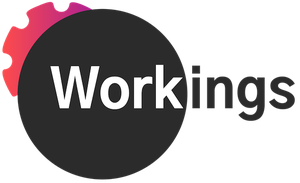When Tony and I took on our Co-CEO roles a few months ago, we knew we were doing so in the midst of a huge amount of change. Generative AI, which longer term is almost equal parts promising and fraught, is proving already to have dramatic impact on the market costs of human content creation. On top of that, the enterprise tech sector (long our bread-and-butter clientele) is in the midst of a global “reset” that has shaken up both org charts and procurement strategies.
We very much still believe in our company mission to secure good jobs for creative professionals and related experts, and given all the shifts at play, we are laser-focused on figuring out how to continue to provide those good jobs in a financially sustainable way. I want to share with you here some of our current thinking about how we plan to do that in Steyer’s fourth (!) decade; your feedback is truly welcome as we solidify and test our vision.
The market reality: genAI is driving down the cost to produce content and speeding up the time to do that production work. It’s also very helpful in non-production scenarios as a sounding board and assistant or intern, and it seems to be only getting better from here. We don’t see genAI going away. But genAI is also not (yet?) reliable: it does not have human levels of discernment, it hallucinates information, it has (often humorous, in a lab setting, but potentially very dangerous) blind spots. Companies cannot count on genAI to produce, of its own accord, trusted content that actually does what it’s supposed to do for the business.
And that’s where we come in.
In Steyer’s next chapter, we see a role for ourselves as a partner to clients, driving business results with trusted content, design, and messaging. We’ve been content creators since Marty Steyer founded the company in 1995, and we’ll continue to be content creators using the latest and greatest tools. In fact, we’re already—where we have client permission—using genAI tools to produce deliverables with stunning relative efficiency. But given the way genAI has changed the content production game, we think we’ll need to shift the bulk of our deal-finding and engagement focus to work that lives upstream and downstream from AI-assisted content production.
Upstream, it’s all about the content strategy, UX/interaction design, instructional design, customer research, and information architecture work that goes into knowing your audiences and communicating with them effectively. Upstream is also where the planning and preparation for future AI solutions come into play. (Is your technical content ready for AI? We can help.) Downstream, we see a big opportunity to provide ultra-reliable human QA of AI-generated content and to design and execute tests to measure effectiveness of that content once it’s in use.
We see human talent most strategically deployed to match up business goals with content solutions, using AI and other tools to create that content, and then ensuring it’s trustworthy and will actually do the job that set of content is supposed to be doing for its organization.
Here’s a draft of the positioning we’ve been circulating with our employees and advisors, designed in PPT by yours truly (eventually, a graphic designer will fix the PPTness of it all for me). Tony and I would love to hear from you: Are we headed in the right direction? If you were to come up with a business strategy for a content agency in 2024, what would you have thought about differently?

At Steyer, we have pivoted before (during our evolution from a staffing company to a content company within the last decade), and we’re confident we can pivot again:
- We’ve identified three core activities on which to focus our distinctly human team: 1) finding new business, 2) solving clients’ business problems with strategic content, and 3) cultivating a workplace that attracts and retains the best human talent.
- At the same time, we are doing the difficult change management work of finding efficiencies via automation and process improvements in areas that are important, but less aligned with our chief sources of competitive advantage.
- We’ve gotten clear on the team qualities required to meet the moment: people who are whip-smart, deep listeners, energetic learners, and creative problem-solvers.
- We have structural protections in place against groupthink and individual blind spots.
While these are real sources of strength and optimism for us, we recognize that the climb ahead is steep. We believe, though, that the future will continue to be shaped by human decision-makers—and that our core ability to create authentic connections between humans will have enduring value.
Thanks,
Katelyn
Photo by Katelyn Reilly



